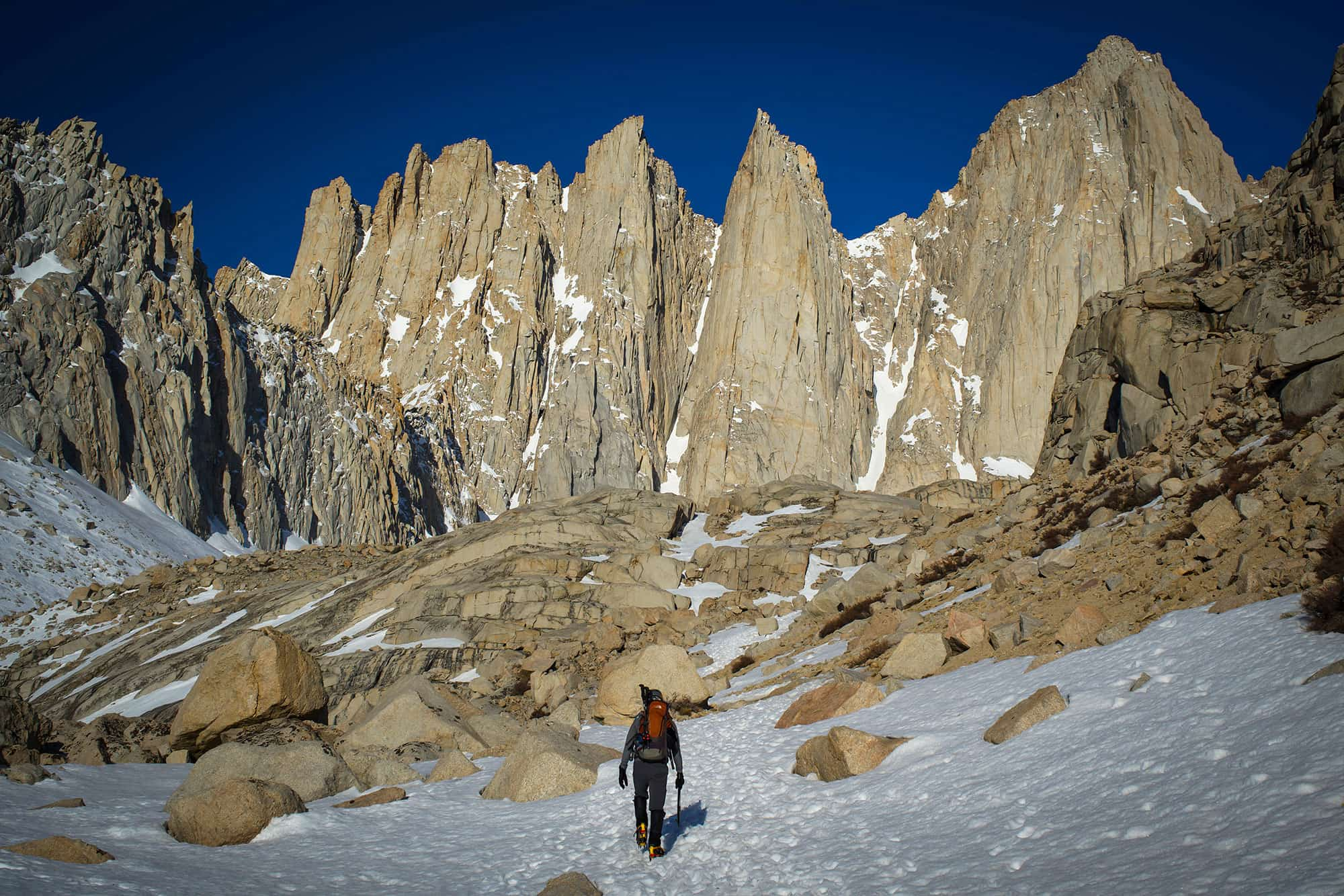Mount Whitney permits are required to summit the highest peak in the lower 48. Here’s how to (hopefully) secure yours.
In the southern range of the Sierra Mountains, Mount Whitney rises to 14,505 feet, the tallest peak in the lower 48 states. A grueling, 11-mile hike climbs up 6,200 feet in elevation, putting you on a summit with expansive views of the Sierra Nevada and that deep sense of personal accomplishment that only comes from pushing your limits. But summiting Mount Whitney is no walk in the park. The 22-mile round-trip takes a high degree of physical fitness, knowledge of tree-line travel safety, and last but not least, a permit.
With thousands of climbers shooting for the summit of Mount Whitney every year, the Forest Service implemented a permit system to help keep the numbers in check. It’s a lottery system, similar to other camping destinations in California, that can be frustrating to navigate. But with a little planning, a little patience, and some sound advice, you can increase your chances of security Mount Whitney permits.
How to Secure Mount Whitney Permits
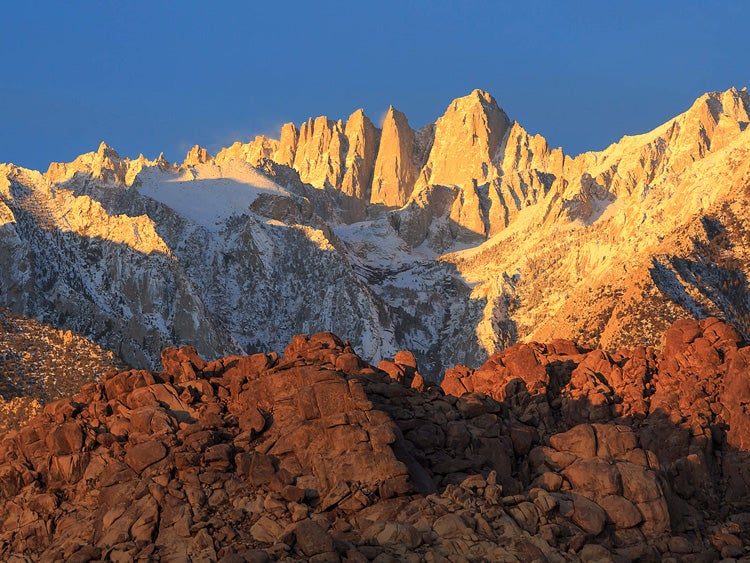
Sunrise on 14,505-foot Mount Whitney.
Since it’s a lottery system, securing Mount Whitney permits does involve some luck. In the 2019 drawing for Mount Whitney permits in late March, the Forest Service received more than 18,800 applications requesting spots for 84,000 people. Only 34 percent of applicants — 5,651 team leaders — received their preferred dates. In all, roughly two-thirds of applicants were unsuccessful, mostly because the dates they requested were very popular ones, though about 625 were disqualified.
Knowing that the chances are slim to begin with, it’s important to stack the deck in your favor by submitting the proper application for the right permit at the right time to gain one of these coveted spots.
Two Types of Mount Whitney Permits
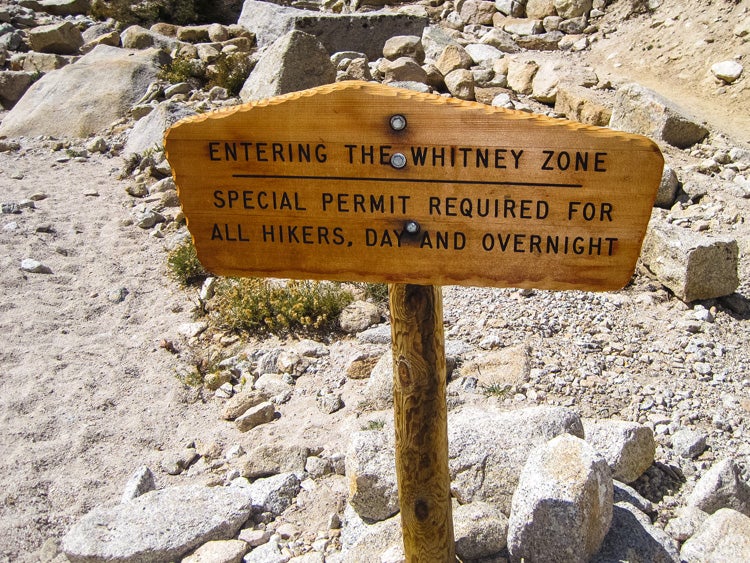
The main trail, the Mount Whitney Trail, provides the most direct route to the summit and, once the snow has melted, requires few technical skills. This trail begins at the Mount Whitney Portal in the Inyo National Forest. From there it covers 11 miles on its way up to the summit, gaining approximately 6,200 vertical feet, passing through the John Muir Wilderness and ending on the summit in Sequoia National Park. There are other trails, like the Mountaineers Route, that require rock climbing and mountaineering expertise, but those are not recommended for first-time Mount Whitney attempts. The permits discussed below are for the Mount Whitney Zone only.
Day Use Mount Whitney Permit
Day use permits include the time frame from midnight to midnight for hikers to complete the 22- mile round trip. Due to the variable weather and length of the trail, pre-dawn, alpine starts are strongly recommended for day use permit holders. Hikers need to be prepared to travel in the dark and must be prepared for the intensity of high-altitude travel lasting at least 12 hours. Day use permits can never be on consecutive calendar days, and users cannot plan for any overnight stay in the Mount Whitney Zone.
Overnight Mount Whitney Permit
Backpackers interested in summiting Mount Whitney must apply for an overnight permit, which allows the users to camp within the Mount Whitney Zone for one night. Popular backpacking camping areas are Lone Pine Lake (10,000 feet), Outpost Camp (10,500 feet), Consultation Lake (11,000 feet) or Trail Camp (12,000 feet). Many backpackers hike to one of these points with all their gear, set up a base camp and then do the summit attempt from there the next day, leaving the heavy gear with their tent. Even without summiting the actual peak, the hike and campout at these beautiful spots can be the overnight backpacking trip of a lifetime.
If you are concerned about your ability to hike quickly at high altitude, your best bet is to choose a backpacking permit. By establishing a basecamp closer to the summit, you will not need to push nearly as hard on the day you make your summit attempt.
How and When to Apply for Your Mount Whitney Permit
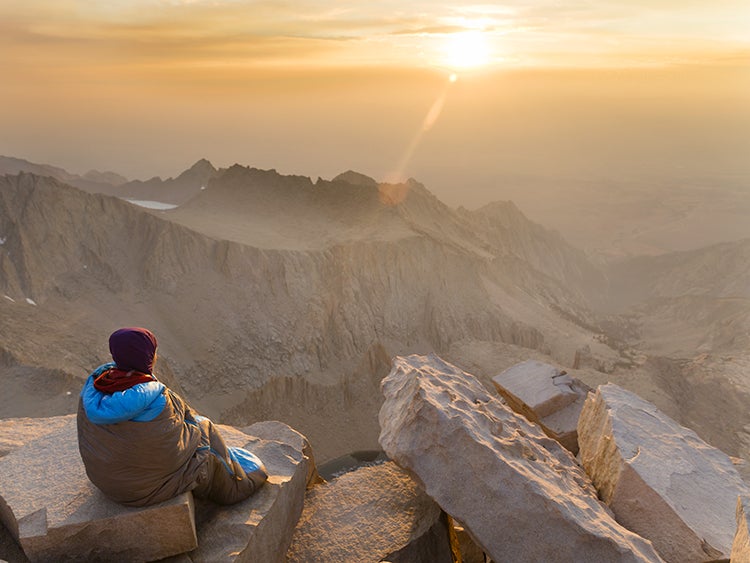
The lottery for the 2019 season has already been completed, and unclaimed dates were posted on May 1. This doesn’t mean it is impossible to pick up a permit for this season, but you will have to be very flexible. As life happens, permits that were claimed can be dropped, or group sizes shrunk. As permits become available, they will be posted on Recreation.gov, and you may see available dates by choosing which type of permit you want — day use or overnight — and entering the number of people in your party.
Getting ready for the 2020 season, the application window for the permit lottery for Mount Whitney is open from February 1 to March 15 every year. You can enter your application at any point within that window. To make sure your application goes through, it is important to check off all the following steps:
- If you do not already have one, create an account with Recreation.gov, the only platform which issues these permits.
- Submit only one application during this window with your preferred date and up to 15 alternate dates.
- Choose your group size (new for 2020) up to 15 people.
- Designate an alternate trip leader who will need to acknowledge their responsibility upon application.
- Pay the $6 application fee to Rec.gov
To up your chances of winning your preferred date, follow these tips:
- Pick a weekday (for obvious reasons)
- Hike with a small group. There are only 160 people allowed on the trail every day, so smaller groups have a better chance of fitting into that quota. Also, hiking a challenging trail like this with a large group is incredibly difficult as every person travels at a slightly different pace and you must stick together.
- Choose a date as late in the season as possible.
Mid-summer to early Fall is the most popular hiking window. Fall is really the only viable ‘shoulder season’ to hike Mount Whitney, as the Spring season would involve a more alpine-like ascent due to lingering snow and ice. If you love your ice ax and crampons, by all means, go for it, but many people are surprised and disappointed to discover that the upper portion of the trail is still covered in snow at the end of June. Snow in 2019 is predicted to linger as long as mid-July.
Keep in mind that these are for private use only. If any member of the group is considered a guide or is receiving any kind of compensation for the trip, they need to call the Inyo National Forest ranger station directly to ask about commercial use permits.
Claiming Your Permit
This is more complicated than in most other permitted areas, and if you want to be allowed on the trail, make sure you complete each step.
- Check Recreation.gov after March 24th to determine whether you were selected.
- If you win, you must pay the $15 permit fee to Inyo National Forest no later than April 30, or you will lose your reservation.
- If you didn’t win in the lottery, check back on May 1st, when unclaimed permits are posted. You may claim one of those permits and pay the $15 permit fee at that time.
- One week before the trip, you must visit Recreation.gov again to verify your group size. Due to the popular nature of this hike, it is important to claim an accurate group size in order to allow dropped hiking permits to be claimed by others.
- You will need to pick up your physical permit by checking in at the Eastern Sierra Visitor Center during business hours. If you can’t make the stop during operational hours, call ahead of time to request that your permit be placed in the will-call box.
- Plan for a little extra time to pick up your permit at the visitor center. It is a busy hub for many of California’s favorite destinations including Death Valley, and issues several other major permits. You will receive a WAG bag waste system here, and you can also rent bear canisters and talk with the ranger about current conditions.
- Trip leaders must have their actual permit signed and on their person throughout the trip.
Other Permits for the Area
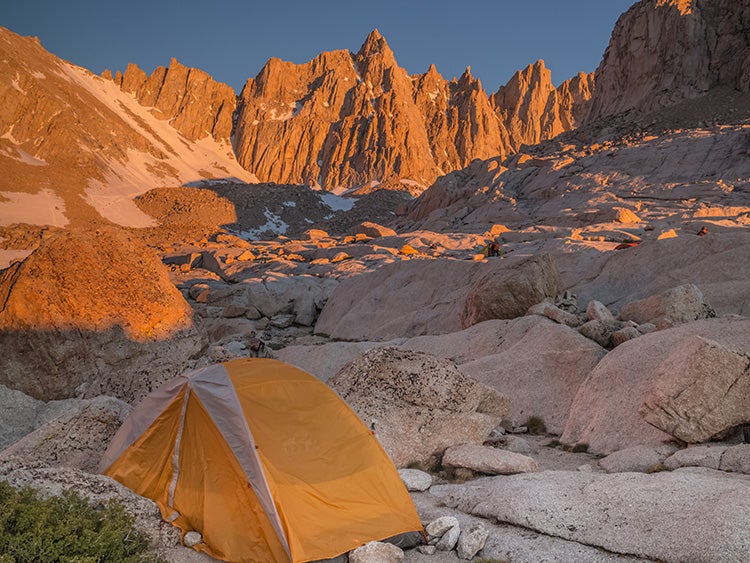
Mount Whitney is the southernmost point of the Pacific Crest Trail, including the John Muir section. If you are thru-hiking over Mount Whitney, you will need to apply for an overnight permit through the Mount Whitney Zone in the standard lottery.
To extend your Mount Whitney overnight permit into these trails, indicate your exit point on your permit application. All of these trails travel through wilderness areas, and any time you exit the wilderness area, re-entry requires a new permit for that date. The Pacific Crest Trail Association has a thorough list of other permits you may need as you travel this beautiful trail through the gems of American public lands. Make sure to always adhere to wilderness travel Leave No Trace practices.
Whitney Portal Campground is an excellent basecamp for any of these mountain activities. It is also just a beautiful place to stay for those interested in soaking in the beauty of the highest point in the continental U.S. from slightly lower altitude.
Related articles:
Related Campgrounds:
- Cottonwood Pass Walk in Campground, Lone Pine, CA

